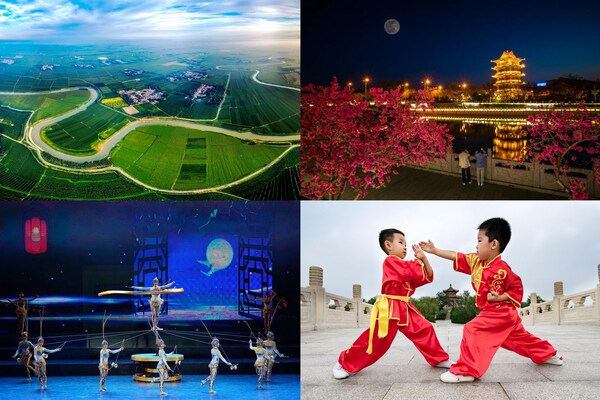CANGZHOU, China, Jan. 24, 2024 /PRNewswire/ -- Nanchuan Building and Langyin Building, two historic buildings beside the Beijing-Hangzhou Grand Canal in Cangzhou, North China's Hebei Province, officially opened to the public recently.

To revive the beauty of the Canal, Cangzhou integrated regional culture into urban renewal, and through landscape display and public services, the city has made its cultural heritage alive and attractive.
To celebrate the New Year, Nanchuan Old Street, where the Nanchuan Building and Langyin Building are located, held splendid cultural activities such as dragon and lion dances, phoenix flying and the Hanfu parade. Statistics show that Nanchuan Old Street received about 95,000 tourists during the 3-day New Year holiday.
The over 2,500-year-old Beijing-Hangzhou Grand Canal is the world's oldest and longest artificial river; about one-eighth of the 1,794 kilometres (1,115 miles) of the long Canal runs through Cangzhou.
To revive the beauty of the Canal, Cangzhou integrated regional culture into urban renewal, and through landscape display and public services, the city has made its cultural heritage alive and attractive. The 308-kilometre embankment top road runs through the central axis of Cangzhou, and the three buildings, Qingfeng, Langyin, and Nanchuan, reproduce its ancient style. The Hundred Lions Park and Canal Park have become ideal places for residents to enjoy the water and relax, while the Garden Exposition and Dahua Industrial Heritage Cultural Zone have become new urban cultural landmarks in Cangzhou.
In recent years, to further strengthen the protection of cultural heritage, Cangzhou investigated 176 cultural heritages and 377 non-legacy projects, established a protection list by classification and rating, delineated protection zones, established a cultural heritage inspection and supervision mechanism, and cleared the scattered and polluted enterprises along the Grand Canal.
At the same time, the city completed the digital records of 19 national intangible heritage projects and identified 432 municipal intangible heritage representative inheritors so that the canal culture can be inherited and promoted along the Grand Canal.
At present, the China Grand Canal Intangible Cultural Heritage Exhibition Hall, one of the largest in China, has become a concentrated exhibition of intangible culture in eight provinces (cities) along the Grand Canal.
Cangzhou will take the opportunity of the construction of the Grand Canal cultural belt and non-genetic inheritance to continuously inject new energy and vitality into speeding up the construction of a modern, economically strong, and beautiful city.